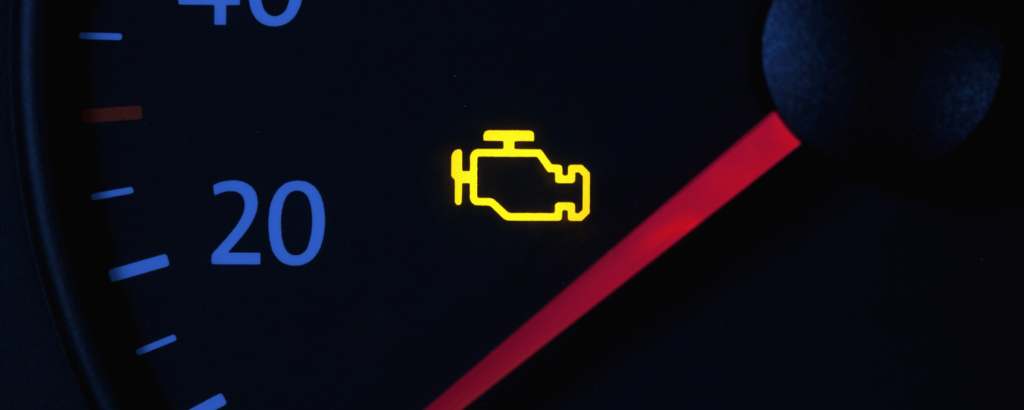Seeing the check engine light on your dashboard can be alarming, but it doesn’t always mean disaster. Your vehicle’s onboard diagnostic system (OBD-II) triggers this warning when it detects an issue. It could be something minor like a loose gas cap or something serious like an engine misfire. In this guide, we’ll explore the most common causes, what they mean, and how to fix them.
Common Reasons Your Check Engine Light Is On
1️⃣ Loose or Faulty Gas Cap
🔎 Why It Happens: If your gas cap is loose, missing, or cracked, fuel vapors escape, triggering the light.
✅ Fix: Tighten the gas cap. If the light persists, replace it with a new one.
2️⃣ Oxygen Sensor Failure (O2 Sensor)
🔎 Why It Happens: A failing O2 sensor affects fuel efficiency and emissions.
✅ Fix: Replace the faulty sensor to improve gas mileage and prevent damage to the catalytic converter.
3️⃣ Faulty Mass Air Flow Sensor (MAF Sensor)
🔎 Why It Happens: A dirty or malfunctioning MAF sensor causes rough idling, poor acceleration, and reduced fuel efficiency.
✅ Fix: Clean or replace the sensor to restore engine performance.
4️⃣ Worn Spark Plugs or Ignition Coils
🔎 Why It Happens: Old spark plugs or ignition coils cause misfires, rough idling, and sluggish acceleration.
✅ Fix: Replace spark plugs and ignition coils to improve fuel efficiency and engine performance.
5️⃣ Malfunctioning Catalytic Converter
🔎 Why It Happens: The catalytic converter reduces harmful emissions. If clogged, it can lead to poor acceleration and increased fuel consumption.
✅ Fix: A damaged catalytic converter usually needs to be replaced.
6️⃣ Dead or Failing Battery
🔎 Why It Happens: A weak battery can trigger electrical issues, including warning lights and starting problems.
✅ Fix: Test the battery and replace it if voltage levels are low.
7️⃣ Failing Alternator
🔎 Why It Happens: The alternator powers your vehicle’s electrical system. If failing, you may notice dim headlights, a weak battery, or stalling issues.
✅ Fix: Replace the alternator before it fails completely.
8️⃣ Transmission Issues
🔎 Why It Happens: Transmission problems, such as slipping gears or delayed shifting, may activate the check engine light.
✅ Fix: A diagnostic scan can determine if low transmission fluid, sensor failures, or mechanical issues are causing the problem.
How to Diagnose a Check Engine Light Issue
1️⃣ Check for Other Warning Lights – If multiple lights are on, the issue may be electrical or battery-related.
2️⃣ Inspect the Gas Cap – Make sure it’s tight and not cracked.
3️⃣ Use an OBD-II Scanner – This tool reads diagnostic codes to pinpoint the problem.
4️⃣ Look for Performance Issues – Strange noises, loss of power, or rough idling can indicate more serious problems.
5️⃣ Get a Professional Inspection – If the light is flashing or stays on, visit Onsite Auto Services for expert diagnostics.
What to Do If Your Check Engine Light Is Flashing
⚠ A flashing check engine light means a serious issue, like an engine misfire. Driving with a misfire can cause severe damage to your catalytic converter.
✅ Immediate Actions:
- Reduce speed and avoid heavy acceleration.
- Get your vehicle checked immediately at Onsite Auto Services.
Need Professional Diagnostics? Contact Onsite Auto Services!
🚗 Is your check engine light on? Don’t ignore it! Our certified technicians at Onsite Auto Services use advanced diagnostic tools to pinpoint the issue and provide fast, affordable repairs.
📞 Call us today or schedule an appointment online for expert check engine light diagnosis and repair services!
CheckEngineLight #CarDiagnostics #AutoRepair #EngineTroubles #CarMaintenance #VehicleHealth #EngineLightFix #OBDScanner #MechanicNearMe #CarRepair
“Is your check engine light on? Learn the most common causes, what they mean, and how to fix them. Get expert tips to diagnose and resolve engine issues!”

